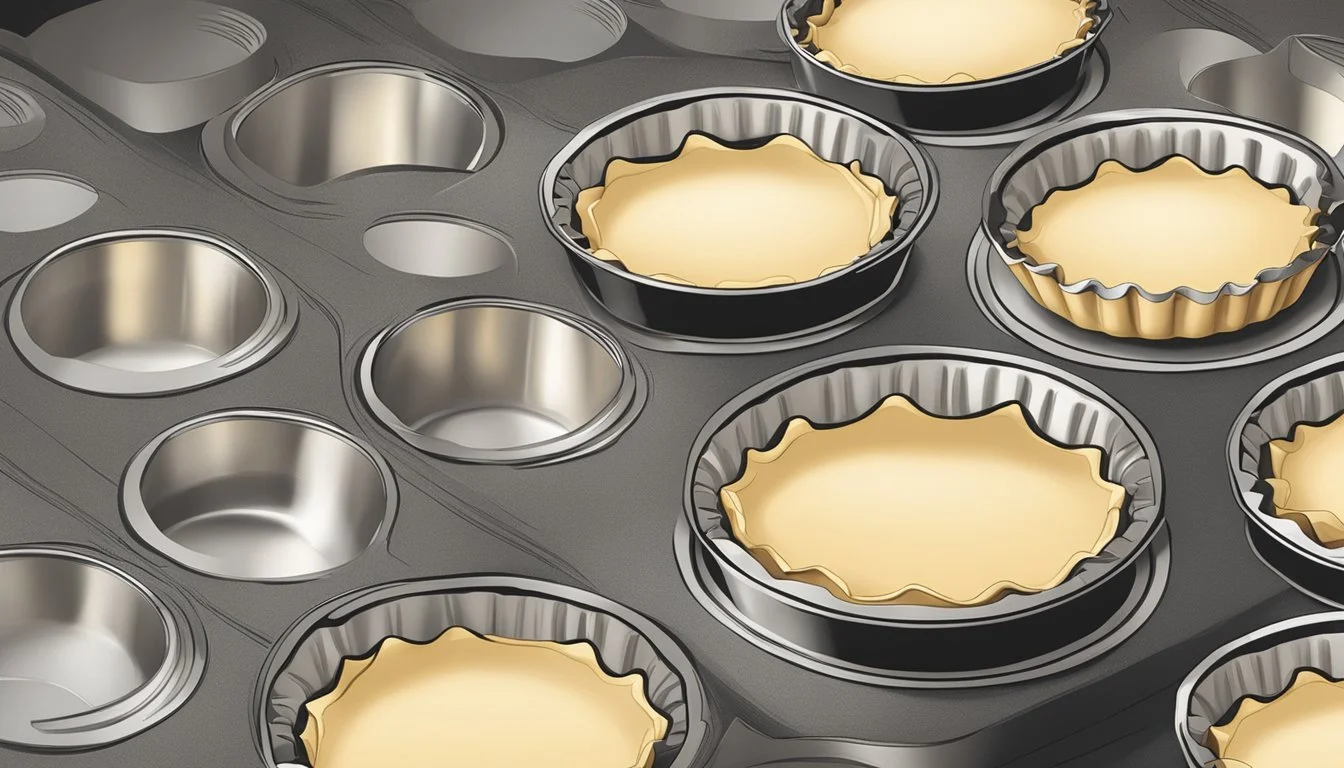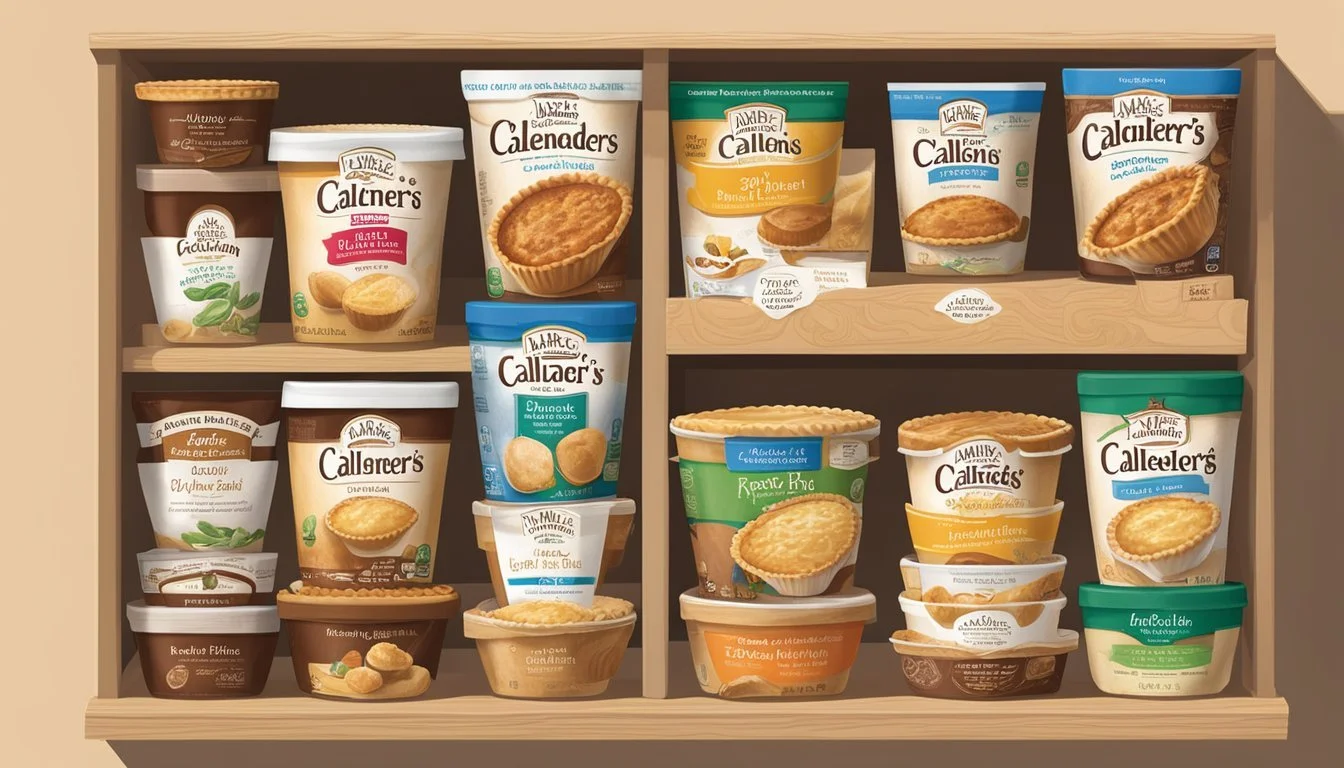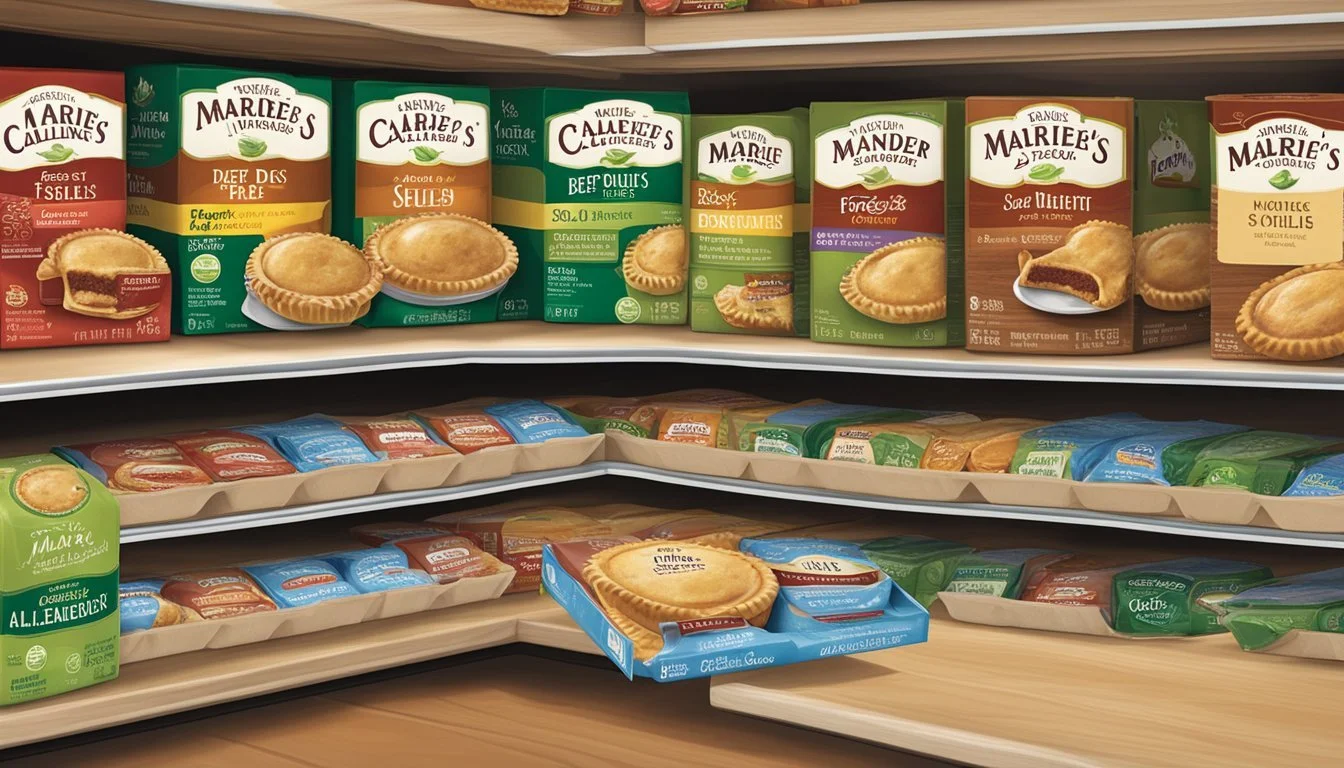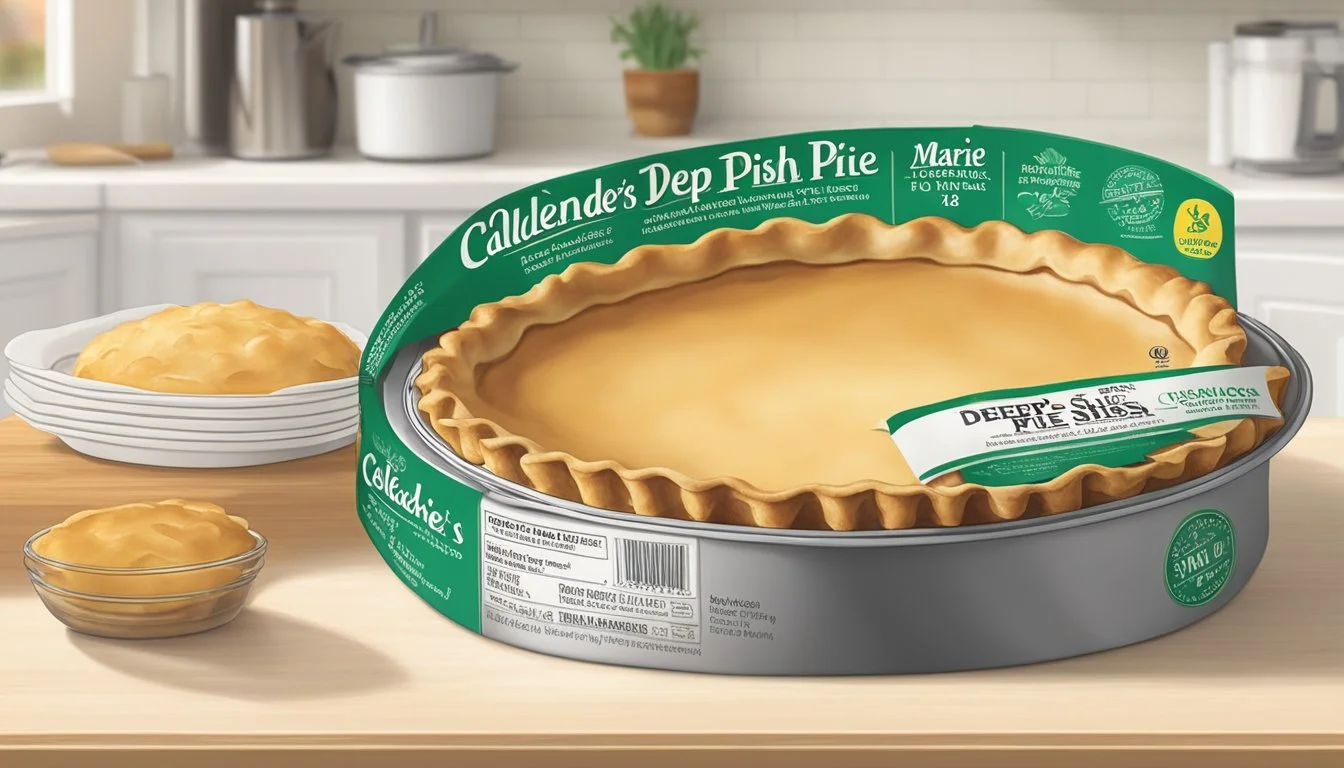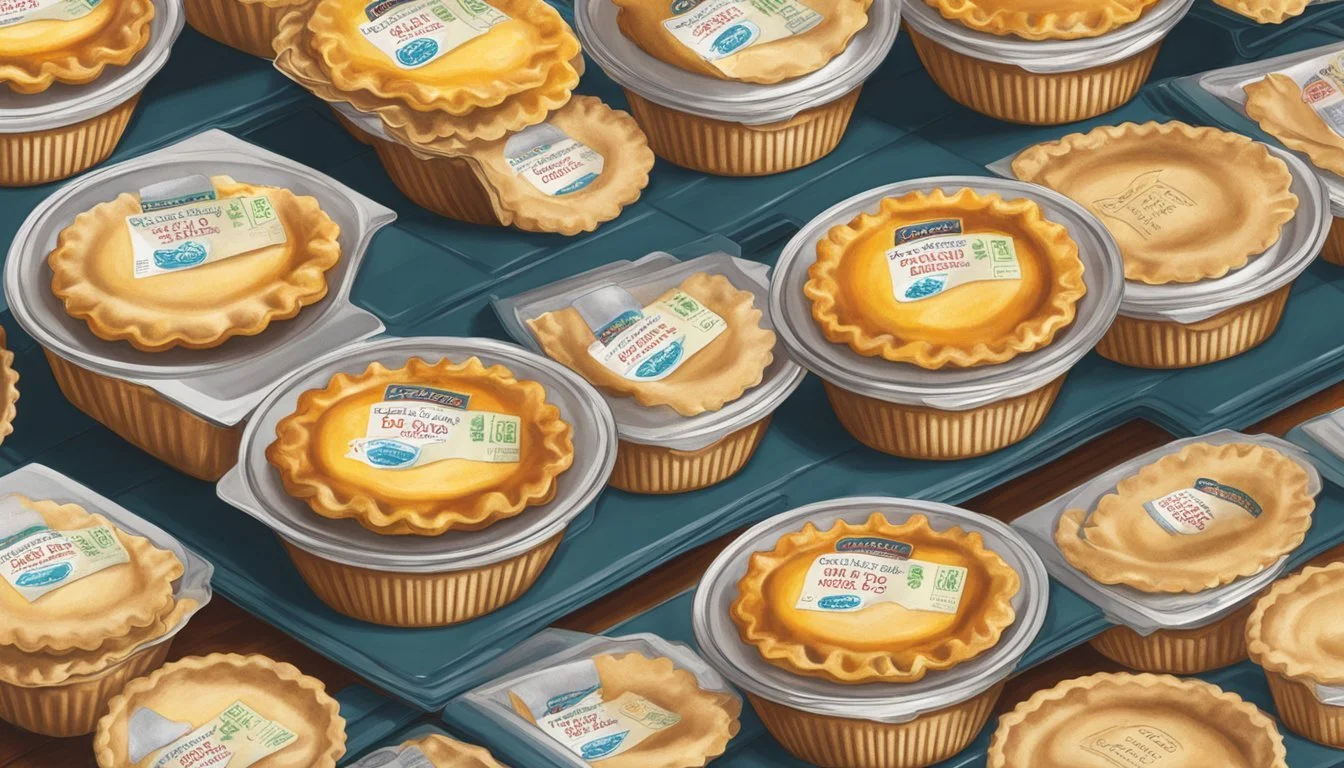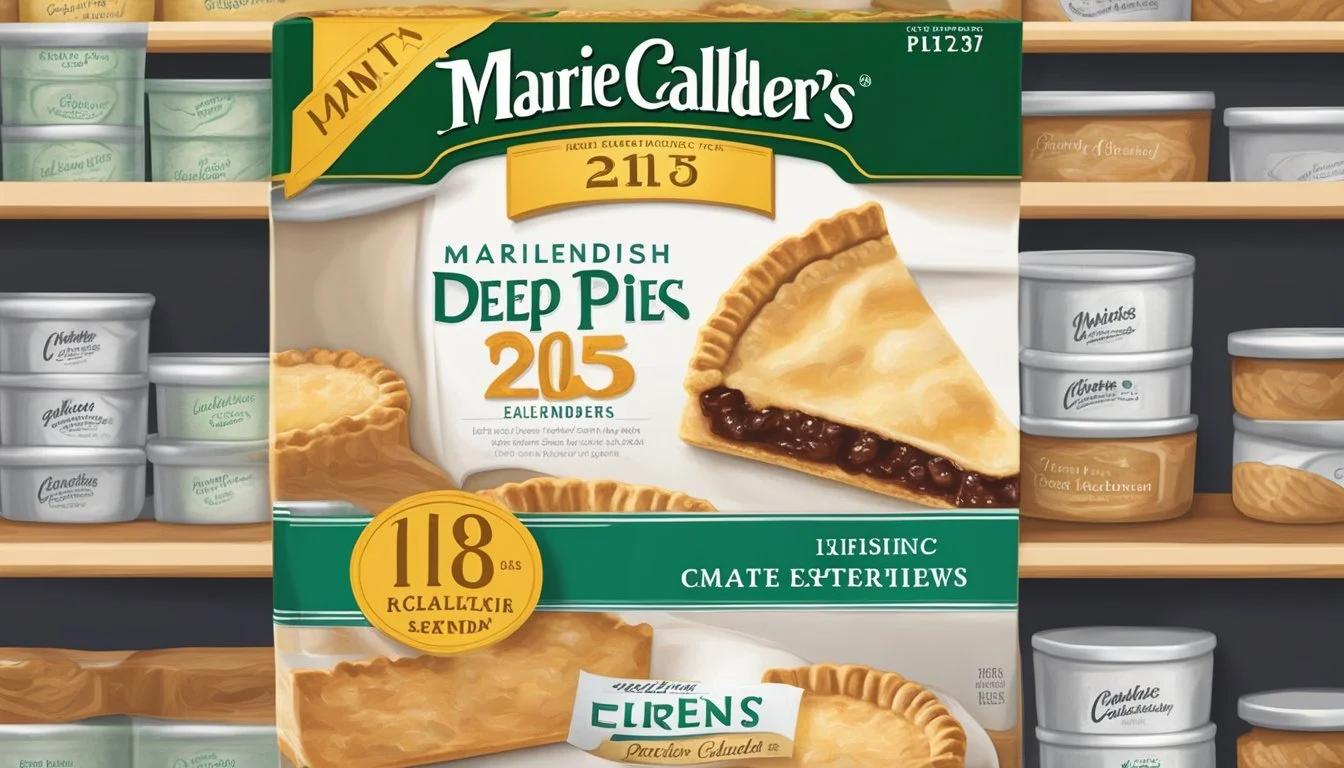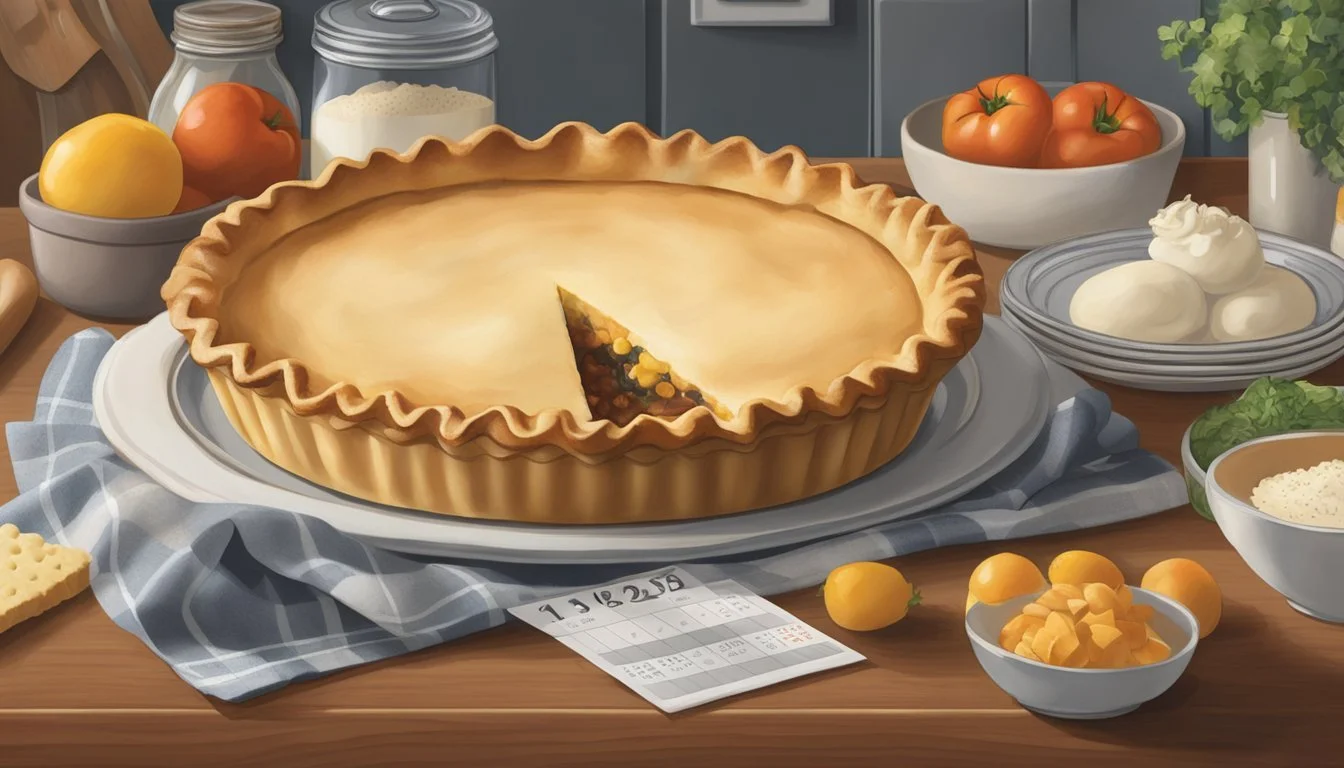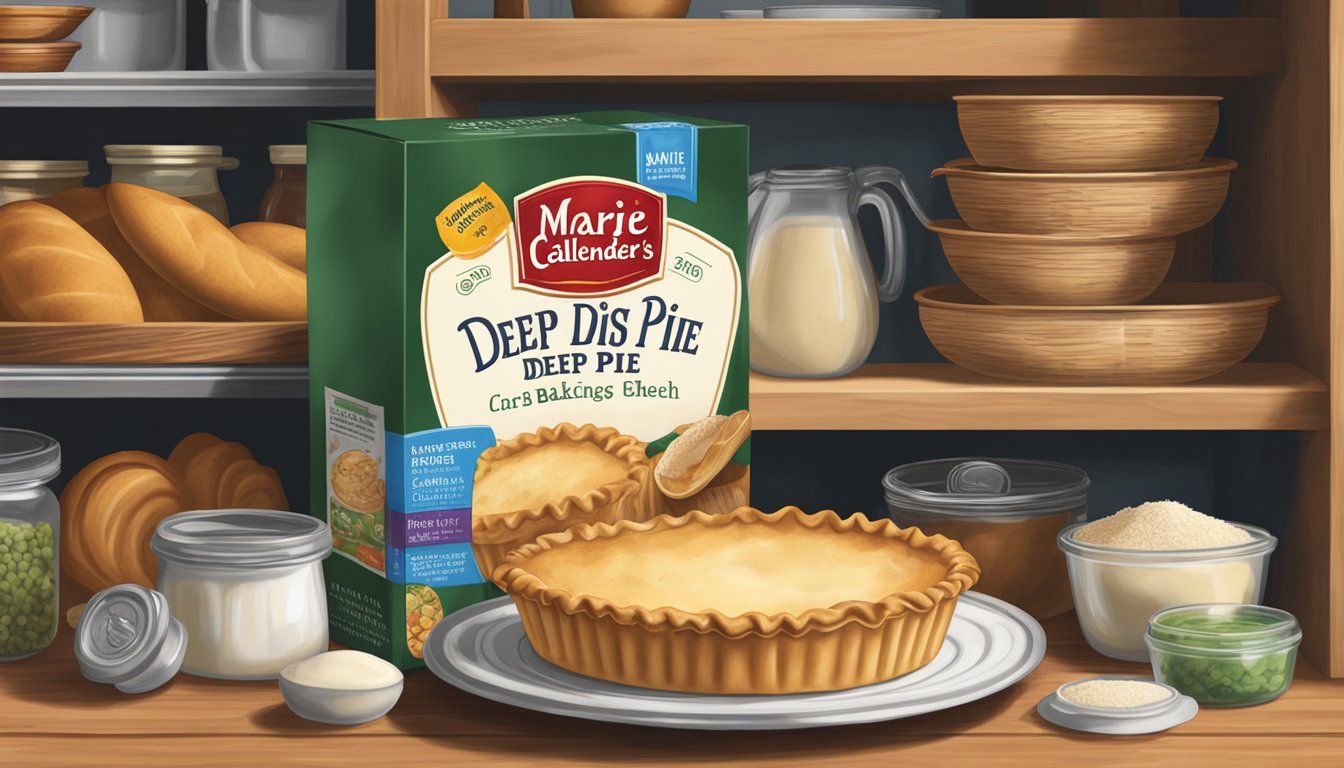How Long Do Marie Callender's Deep Dish Pie Shells Last
Shelf Life Explained
Marie Callender's deep dish pie shells are renowned for their homemade quality, providing a flavor and texture akin to a crust made from scratch. These pie crusts offer a convenient option for those looking to save time in the kitchen without compromising on the quality of their baked goods. The longevity of these pie shells, once purchased, is a common point of interest for consumers who value both convenience and taste.
Upon bringing Marie Callender's pie crusts into the home, the shelf life depends on the storage method. If kept frozen, the pie shells retain their quality until the best by date printed on the packaging, typically ranging from six to eight months. To ensure optimal flavor, it is essential to keep the pie crusts properly sealed and frozen. Thawing and refreezing repeatedly can degrade the quality of the pastry, affecting its flaky goodness.
Once thawed, Marie Callender's deep dish pie shells can be used immediately, filled with a chosen recipe, and baked to perfection. If the shells are to be used without baking, such as for a chilled pie, they can be pre-baked using the package instructions and then cooled before filling. It's recommended to use thawed pie shells within two days when refrigerated to maintain their desirable texture and flavor.
Shelf Life and Storage
When considering Marie Callender's deep dish pie crusts, understanding their shelf life and storage is essential for maintaining quality and taste. Factors like temperature and packaging directly affect longevity and freshness.
Frozen Pie Crust Lifespan
Marie Callender's deep dish pie crusts can be stored in the freezer for up to 12 months. This extended shelf life relies on the pie crusts remaining unopened and properly sealed in their original packaging.
Proper Storage Techniques
To ensure maximum freshness, these frozen pie crusts should be stored at a consistent freezer temperature. After opening:
Wrap the pie crusts: To prevent freezer burn and absorb odors, wrap them tightly in foil or plastic wrap.
Use an airtight container: Store the wrapped pie crusts in an airtight container or a heavy-duty freezer bag.
Include the tin: Keep the crusts in the original tin to maintain their shape and protect against damage.
When thawing, Marie Callender's deep dish pie crusts should be transferred from the freezer to the refrigerator—not at room temperature—to prevent any bacterial growth.
Signs of Spoilage
Visual changes: Look for discoloration or freezer burn on the pie crusts.
Odor: An off smell is a clear indication that a pie crust should not be used.
Texture: If the crust feels overly dry or has a chalky texture, it may have been compromised.
It's important to always check the expiration date on the package and not solely rely on the aforementioned timelines. If the pie crusts show signs of spoilage, they should be discarded.
Preparation and Baking
Proper preparation and baking are crucial steps in working with Marie Callender's deep dish pie shells. Detailed instructions ensure the quality of the pie crust whether it's used for quiches, (What wine goes well with quiche?) sweet pies, or any other recipe.
Thawing Instructions
Before baking, one must thaw the pie shells in the refrigerator for several hours or overnight to maintain the crust's texture and prevent shrinkage during baking. It is essential to follow the package directions carefully to ensure the dough is pliable but still cold.
Baking Guidelines
When ready to bake, preheat the oven according to the recipe requirements—usually around 375 to 400 degrees Fahrenheit for pies. Always place the pie shell on a baking sheet to prevent spillovers in the oven and bake according to the recipe's directions.
Tips for Pre-Baking
Pre-baking (or par-baking) is necessary for certain recipes, especially those with a wet filling like quiche, to avoid a soggy crust. To pre-bake, prick the bottom of the dough with a fork to prevent puffing, line with parchment paper, and use pie weights or dried beans to weigh the dough down. Bake for 10-12 minutes until the crust is light golden-brown.
Baking Without Filling (Blind Baking)
Some recipes may call for a fully baked crust without filling, also known as blind baking. Continue baking the pre-baked crust for an additional 15 minutes or until it's golden brown and cooked through. Removing the pie weights halfway through will ensure even browning. Always let the pie shell cool completely before adding the filling.
Nutrition and Ingredients
Marie Callender's deep dish pie shells offer a convenient option for baking, with a focus on flavor and texture. However, understanding their nutritional content and ingredient quality is crucial for consumers who are mindful about their dietary choices.
Nutritional Information
The nutritional profile of Marie Callender's Deep Dish Pastry Pie Shells per serving size of 1/8 pie shell (28g) is as follows:
Calories: 140
Fat: 10g
Saturated Fat: Not specified
Trans Fat: Not specified
Cholesterol: Not specified
Sodium: Not specified
Carbohydrates: 11g
Protein: 1g
This information indicates that the pie shells have a higher fat content, which is common in pastry to achieve a flaky texture.
Ingredient Quality
Marie Callender's Deep Dish Pastry Pie Shells contain a variety of ingredients that contribute to their overall taste and texture:
Enriched Wheat Flour: Contains several vitamins and minerals for fortification such as niacin, reduced iron, thiamine mononitrate, riboflavin, and folic acid.
Soybean Oil and Hydrogenated Soybean Oil: Contributes to the crust's flakiness.
Water: Used in the dough formation.
Dextrose: A form of sugar that may aid in browning.
Salt: Enhances flavor.
Dough Conditioner (Sodium Metabisulfite): Helps to maintain the dough's consistency and elasticity.
The use of hydrogenated oils may introduce trans fats, which are known to be less healthy than other fats. Ingredient transparency becomes important for those looking to maintain a balanced diet.
Recipe Ideas and Enhancements
Marie Callender's deep dish pie shells offer endless possibilities for both sweet and savory dishes. Whether one is making a classic dessert or experimenting with savory fillings, these pie crusts serve as the perfect foundation for various recipes and enhancements.
Creative Filling Options
For dessert lovers, one can fill these deep dish crusts with traditional pecan or pumpkin pie mixtures, delivering the classic flavors many crave. An apple pie filling, brimming with cinnamon-spiced apples, can turn a pre-made shell into a homestyle treat. On the savory side, fillings like quiches or chicken pot pie (What wine goes well with chicken pot pie?) offer a hearty meal option. These shells are versatile, capable of holding both robust and delicate fillings.
Desserts:
Pecan filling with a drizzle of bourbon or maple syrup
Pumpkin filling with a blend of autumnal spices
Apple filling with a hint of nutmeg and a caramel topping
Savory Pies:
Quiche with spinach, feta, and diced tomatoes
Chicken pot pie with peas, carrots, and a creamy sauce
Customizing the Crust
One can elevate Marie Callender's pie crusts with simple customizations. Before baking a savory pie, brushing the crust with an egg wash can give it a golden sheen. Sprinkling the edges with flaked sea salt or sesame seeds can enhance flavor and texture. For dessert pies, a sprinkle of sugar or cinnamon before baking adds a sweetly spiced crust.
Savory Enhancements:
Egg wash on edges for a golden finish
Flaked sea salt or Parmesan cheese for a flavor boost
Sweet Enhancements:
Cinnamon sugar sprinkled on the edge for a sweet crust
Lemon or orange zest incorporated into the dough for a citrus accent
Each enhancement is designed to complement the filling and add an extra layer of flavor to the pies, making good use of the deep dish pie shells' potential.
Technical Tips for Success
When working with Marie Callender's deep dish pie shells, the priority is on achieving a balance between flakiness and texture to ensure a high-quality result that is both delicious and visually appealing.
Achieving Flakiness
To attain a flaky crust, it’s essential to keep the pie shell chilled until it’s ready to be baked. The cold temperature helps maintain distinct layers of fat between the pastry layers, which is key for that coveted flaky texture. Baking at a high initial temperature can set the flakiness quickly. A golden finish indicates proper development of layers and a crisp crust.
Creating the Perfect Texture
The crust's texture should be tender and light, not tough or soggy. Avoid overworking the dough, as this activates gluten and can make the crust chewy. When pre-baking or “blind baking” the crust for pies with wet fillings, use pie weights or a substitute like dried beans to keep the crust's bottom flat and to prevent puffing. A well-executed bake results in a crust that complements the filling, enhancing the overall taste and mouthfeel.
Variations and Alternatives
When considering the longevity of Marie Callender's deep dish pie shells, it's important to examine the alternative types of crusts available and the differences between homemade and store-bought options.
Different Types of Pie Crusts
Pie crusts come in a variety of types, each offering its own texture and flavor profile that can complement different fillings. Here are common variations:
Traditional Pie Crusts: Typically made from all-purpose flour, unsalted butter, and ice water, these crusts are valued for their flaky texture and rich flavor.
Graham Cracker Crusts: A combination of graham cracker crumbs, sugar, and butter, pressed into the pie dish; especially popular for cream pies and cheesecakes.
Cookie Crusts: Similar to graham cracker crusts but made with different types of cookies, like Oreos or shortbread.
Gluten-Free Crusts: Made with alternative flours, these are suitable for those with gluten sensitivities.
Homemade vs. Store-Bought
When it comes to determining the shelf life of pie crusts, whether they are homemade or store-bought plays a significant role:
Homemade Pie Crusts:
Typically more time-consuming but are considered easy to work with once the technique is mastered.
Can last for a couple of days in the refrigerator and longer if frozen.
Store-Bought Pie Shells:
Pre-made and rolled out, these crusts offer convenience and time-saving benefits.
Marie Callender's deep dish pie shells, for instance, are ready to use and can be stored in the freezer until needed.
Both homemade and store-bought crusts have their advantages and can be selected based on the baker's preference for convenience or customization.
Health and Dietary Considerations
When choosing Marie Callender’s Deep Dish Pie Shells, consumers should consider the nutritional content and how it fits into their dietary needs. These pie shells contain ingredients that might require substitution or moderation for certain dietary plans.
Reducing Fat and Cholesterol
The deep dish pastry pie shells have a total fat content of 8 grams per serving. To reduce fat and cholesterol intake, one might consider using lighter fillings or adjusting portion sizes. A recipe modification could include substituting some of the fats with lower-fat alternatives, though this may alter the texture and flavor of the final product.
Nutrient Amount Per Serving Total Fat 8g Cholesterol Variable*
*Cholesterol content will primarily depend on the filling used in the pie recipe.
Gluten-Free and Vegan Options
For those with gluten sensitivities or following a vegan diet, the regular Marie Callender’s pastry shells, which contain wheat, will not be suitable. An alternative recipe that uses gluten-free flour or substitutes could be considered. Vegan options can be explored by using plant-based shortening and ensuring that the filling and any other additions are free from animal-derived ingredients.
Dietary Need Suggestion Gluten-Free Use gluten-free flour blend Vegan Use plant-based shortening
Nutritionally, these pie shells are not a significant source of dietary fiber, and they contain 13 grams of total carbohydrates per serving. It's important to factor these into one’s dietary plan, especially if managing conditions that require the monitoring of carbohydrate intake.
Product Care and Maintenance
Proper care and maintenance of Marie Callender's deep dish pie shells are pivotal for ensuring their longevity and preserving their quality. Handling them correctly and choosing the appropriate pie plate are essential steps.
Handling and Unrolling
When working with Marie Callender's deep dish pie shells, one should handle them with care to maintain their integrity. The shells should be allowed to thaw until pliable before unrolling. This typically takes about 20 minutes at room temperature. They should be gently unrolled onto a piece of parchment to prevent sticking and tearing.
Don’t rush the thawing process: Avoid using heat sources to thaw pie crusts, as this can lead to uneven thawing and potential structural weaknesses.
Be gentle: When handling the dough, use a light touch to prevent any tears or cracks that could affect the final baked product.
Pie Plate Selection
The pie plate in which one bakes their pie crust is also integral to the process.
Material: Glass or dull-finished metal pie plates are preferred for even baking.
Size: Ensure the pie plate is the correct size for Marie Callender's deep dish pie shells, typically around 9 inches.
Weight and Heat Distribution: A heavier pie plate can provide more even heat distribution, resulting in a more uniformly baked crust.
When transferring the pie shell into the pie plate, one should carefully press the dough into the plate's bottom and sides while avoiding stretching. The excess dough can be trimmed or folded over to create a thicker crust edge. If baking the crust without filling, one may need to use pie weights or a substitute, like dried beans, to prevent the pastry from puffing up during baking.
Common Questions Answered
When considering the longevity of Marie Callender's deep dish pie shells, consumers often have specific questions about shelf life and how to store these pie products. This section addresses two of the most common inquiries regarding the shelf life post-baking and freezing for future use.
Shelf Life After Baking
Once baked, a Marie Callender's deep dish pie crust will stay fresh for about 2 to 3 days if kept at room temperature. For longer shelf life, the consumer can store the pie with filling in the refrigerator where it can last for approximately 4 to 5 days. It's recommended to cover the pie with plastic wrap or aluminum foil to maintain its freshness.
Freezing and Reusing Pie Crusts
Frozen pie crusts, like those from Marie Callender's, have a considerable shelf life. Unbaked crusts can typically be stored in the freezer for up to 11-12 months. If a consumer has leftover baked pie crust, they should:
Cool the crust completely.
Tightly wrap it in plastic wrap or aluminum foil.
Place it back in the freezer.
The reused crust will retain quality for about 1-2 months. Thawing before reuse is crucial; defrost in the refrigerator for 15-20 minutes before filling and baking again to ensure optimal texture and to prevent sogginess.
Conclusion
Marie Callender's deep dish pie shells offer convenience and reliability for baking endeavors. These pre-made crusts, when stored properly, can last in the freezer for up to two months. However, one should verify the best-by date for optimal flavor and texture.
To ensure a successful baking experience, follow these tips:
Thaw the pie shell at room temperature for 15-20 minutes before use.
Fill with your chosen ingredients only after the shell becomes pliable.
Bake according to your specific recipe instructions to achieve the desired crispness and golden hue of the crust.
Storage Tips:
Sealed: Keep the crust in its original packaging to prevent freezer burn.
Temperature: Ensure your freezer is at 0°F (-18°C) to maintain quality.
Once baked, these pie shells offer a flaky crust that complements both sweet and savory fillings. Using Marie Callender's deep dish pie shells can aid in creating a memorable and tasty dish, whether it be for a family dinner or a special occasion. Remember, success in baking often comes down to precision and attention to detail, from the choice of ingredients to the adherence to storage and baking guidelines.



